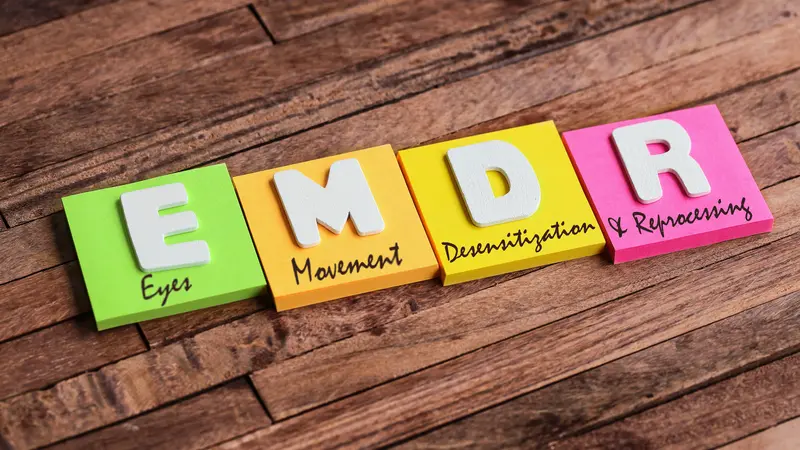

Mental and Behavioral Well-Being

Mental and Behavioral Well-Being
EMDR for Trauma Patients
The psychotherapeutic technique EMDR (eye movement desensitization and reprocessing) is based on the premise that traumatic events can interrupt the brain from normal information processing. The event gets “stuck” in the brain and memory can trigger a re-experiencing of the trauma.
With EMDR therapy, eye movement is used to activate the brain in such a way that the memories of the trauma can be processed by normalizing brain function, allowing emotional healing. If the therapy is effective, the patient is able to understand, consciously and unconsciously, that the trauma or other distressing condition, no longer poses a threat. Following treatment, patients may suffer less distress and negative emotions surrounding the situation that prompted treatment.
EMDR is used principally for post-traumatic stress disorder (PTSD) and trauma but those with addiction, eating disorders, phobias, panic disorder, grief and loss, anxiety, and sleep disorders may benefit from treatment. It’s not uncommon for EMDR patients to be confronting multiple traumas.
There have been numerous studies on EMDR, including a 2014 review that concluded the therapy provided an efficient approach to address symptoms stemming from adverse life experiences. In some of the studies reviewed, between 84% and 90% of patients who experienced a single trauma found relief from PTSD symptoms after three 90-minute EMDR sessions.
A Kaiser Permanente study followed 67 adults diagnosed with PTSD, who were assigned either to EMDR or standard treatment. The EMDR group showed significantly greater and faster improvement than the standard-treatment group on measures of PTSD, depression, anxiety, and general symptoms. In addition, the EMDR group had fewer medication and psychotherapy appointments following treatment as compared to the standard group. A follow-up study at three and six months found that the improvements in PTSD, anxiety, and depression in the EMDR group were maintained. All patients who had experienced one trauma and 77% of multi-trauma patients were free of PTSD after treatment. According to the research, a small number of EMDR sessions resulted in substantial benefits that were maintained over time.
REFERENCES
Amen Clinics. (n.d.) EMDR therapy. https://www.amenclinics.com/services/emdr/?


 By
By






